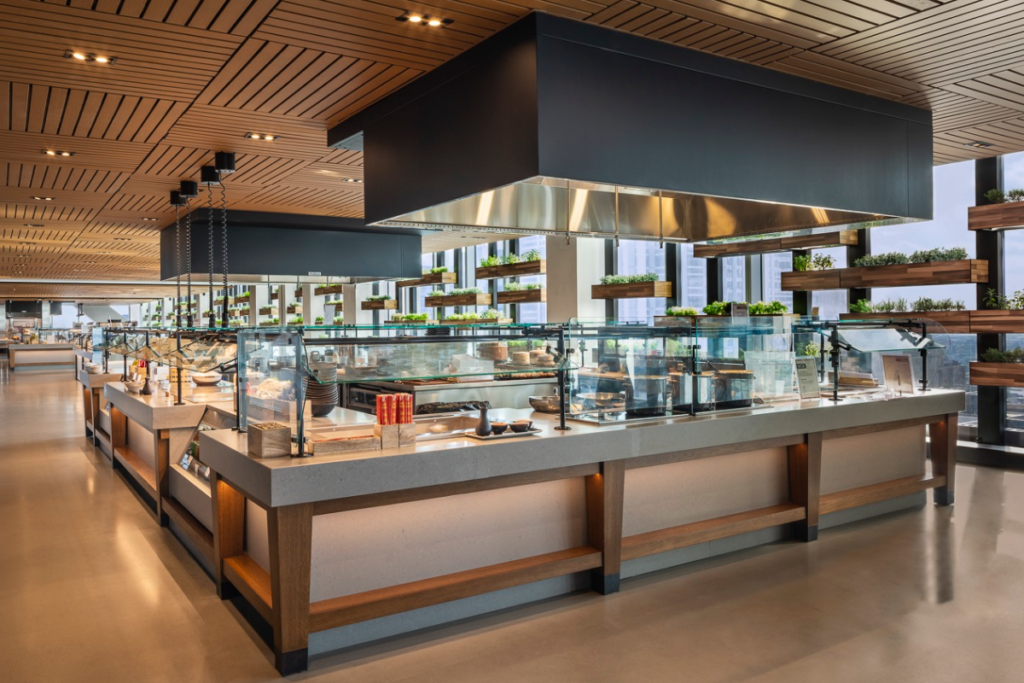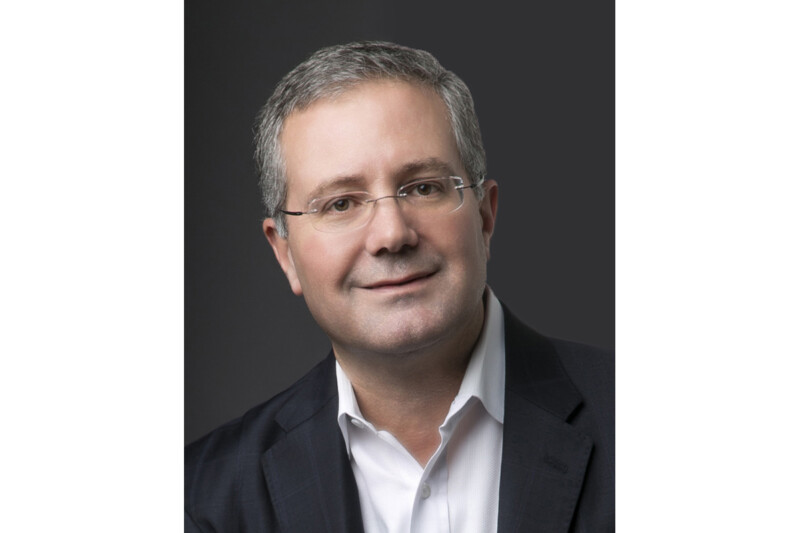Why is the WELL Building Standard Worth Striving For?
Design director of Cini-Little says the standard that focuses on human health and wellness can help attract and retain employees and improve public health.

Imagine a commercial kitchen where chefs weren’t working in excessively hot, smoky spaces, and the latest technology saved employees a lot of elbow grease. Imagine a commercial kitchen where customers could see herbs and vegetables growing right in front of them, and operators could feel confident about the business’ sustainability systems.
A kitchen such as this one would be well on track to becoming certified in the WELL Building Standard, the world’s first building standard that focuses solely on human health and wellness through improvements in 10 key areas (air, water, nourishment, light, movement, thermal comfort, sound, materials, mind and community).

Kip Serfozo
FER spoke with Kip Serfozo, the East Coast design director for Cini-Little Int’l. who incorporates WELL features in all his designs, regardless of whether the client aims to become certified, about why he believes the WELL Building Standard is one all should aspire to, especially now amid a labor shortage and global pandemic.
FER: The WELL Building Standard is said to be able to create healthier, happier and more productive environments by making changes in 10 different categories, like air, water and light. It sounds almost too good to be true. Talk to me about how changes to a building can have such a positive effect on those in it.
SERFOZO: Keep in mind it’s not just the building design that impacts productive employees; it’s also HR program requirements that are mandated by the WELL Building Standard, such as healthcare insurance, travel policies/hours of work, wellness programs, cafe menu selection options, et cetera.
All the recommendations are backed by third-party research studies by the medical community worldwide. Baseline buildings that are not WELL-certified just follow baseline building codes and standards. For instance, all buildings need to follow local building codes, fire protection, OSHA, ADA, ASHRAE standards just to open their doors. I call these baseline requirements. WELL looks at all these building codes and construction standards and says, “How can we raise the bar so that we create a better work environment?”
Think of this analogy: A baseline building is like a recreational soccer player. The soccer player has all the tools to play soccer. A WELL building is like a professional soccer player. That player has a nutritionist, a psychologist, easier access to sports trainers and better workout facilities.
So, the WELL building will have higher professional performers. WELL buildings are state-of-the-art, enjoyable buildings to be in. Building owners that go for WELL are banking on this. They realize that by baking the WELL Building Standard into their workplace culture and to the buildings that they will have a better workforce and more profit at the end of the day.
FER: The WELL Building Standard has been around since 2012, but now with a global pandemic and labor shortage, I would imagine more companies than ever are looking to improve their facilities not only to ensure they’re safe from the spread of viruses but also to attract and retain talent. Have you seen interest in WELL increase for these reasons? If so, can you explain how WELL can lead to safer, cleaner environments and then how WELL-certified spaces can appeal to potential employees?
SERFOZO: You are exactly right. The standard started in the workplace market but now is very popular in K-12, healthcare and upper learning. When you walk into a WELL building, you never want to leave. To me, it’s like going on vacation. The building is quiet, and the thermal comfort is always perfect year-round. The lighting, both task and general, is perfect and comfortable. The workstations are ergonomically friendly. The food selections are healthy and local. The air you breathe is like being on top of a mountain. The water is fresh and filtered. The building environment has quiet zones, so you can actually think.
WELL standards have guidelines for environmentally safe cleaning practices, which allow for a clean facility. Ergonomic-friendly equipment allows for employees to have more time and energy to keep spaces clean.
The WELL Building Standard has inspectors that go on-site to verify all the requirements. Also, WELL requires a lot of automated reporting and monitoring. For example, air and water quality are monitored 24/7. Air CO2 levels are monitored 24/7.
FER: When looking at the 10 criteria needed to become WELL-certified, if an operator could only make changes in a few of them, which ones would you recommend first and foremost and why?
SERFOZO: The biggest one is air quality, hands down, for obvious reasons—COVID and general health. HR policies and water quality are next. Lots of the other requirements can be controlled by the employees themselves. For instance, an employee can monitor their thermal comfort with clothing, add task lighting easily, monitor workstations with props, bring healthy food from home, et cetera.
FER: You’ve mentioned that Cini-Little always designs kitchens and foodservice areas with WELL top of mind, regardless of whether the operator’s end goal is to achieve certification. What WELL features do you implement in most of your designs?
SERFOZO: When you think of the big systems in a kitchen, usually one of the biggest systems is kitchen exhaust, cooking exhaust. So, if you prioritize it from that standpoint, we make sure that the exhaust system is very efficient from a standpoint of clean air because I think air quality is really important in the kitchen.
In the past, it’s usually really hot in the kitchens, really humid, and so we’ve been slowly over the years getting to more efficient work environments for the chefs so that it wasn’t so brutally hot in there and smoky. We take a lot of time working with hood manufacturers to make sure the exhaust system is pulling out all the grease-laden vapors and the smoke and the particulates from air. We’re making sure that all goes outside the building so that the air for the chefs is more desirable.
FER: Along those lines, do you specify for the self-cleaning exhaust hoods?
SERFOZO: Yes, so there are water-wash hoods where automatically, after each shift, they can run a water-wash system just to clean out the hoods. That’s kind of a labor-saving thing because you don’t actually have to get up there and do the cleaning yourself. It can flush it out with a water-wash detergent system, and there’s an ultraviolet cleaning system in the hoods that we implement as well.
FER: Is there anything else you’d like to mention about what you like to incorporate in all of your projects?
SERFOZO: I’d just like to circle back on the water issue because that’s a huge issue with kitchens because they use so much water. They use water for cooking, and then they use it to directly serve customers. We’re constantly making sure that we’ve got the right filter for each application. So, there’s a different filter for the cooking equipment and the ice makers so that they run efficiently, but then there are also different filters for customers on the front end when you’re hooking it up to coffee makers and making sure the water is filtered for the fountain beverage dispensers.
And then even there’s more. All customers are wanting just filtered drinking water, either sparkling or still, especially in more of the higher-end restaurants, so we’re specifying a lot of those water filter system just to make sure the water is super, super high quality.
FER: It sounds like you really focus on the water and air features then.
SERFOZO: Yeah, it’s almost like water is becoming almost like a food group. It’s becoming almost like a boutique thing. People really want good, clean water nowadays.
FER: As you’re aware, foodservice manufacturers have more and more equipment that’s in line with the WELL Building Standard. What are some of the latest products that you find most cutting-edge and beneficial?
SERFOZO: The climate-controlled herb refrigerators, we use those a lot. It almost looks like a refrigerator, but they grow herbs inside of them. It’s like a reach-in refrigerator, but instead of food in there, they’ll have different levels of herbs. It self-waters them, and it keeps them at the right climate. It’s almost like a terrarium, so customers can see the glass and see the garden. There are different lettuces or whatever growing, and then the chefs just open the door and clip off stuff as they need it. So, we’re doing a lot of those.
We’re doing a lot of the food cubbies. It’s a way of keeping the food more secure. You know, if you go to [a restaurant], they put your order out on this open shelf, and you find your name. Then you just grab it; that’s not too secure from the standpoint of food safety and everything. So, the food cubbies, you have to have a code, and you go to it and type in your code. The door opens, and you get your food. It’s a little more safe and secure.
FER: So, the WELL Building Standard has been out for almost a decade. Do you think more employees are aware of what this is and are more attracted to places that have these WELL certifications?
SERFOZO: Yeah, absolutely. I’m seeing also companies just use it almost as an employee benefit. Employers are marketing it to employees, and so I think when the employees learn about the company and understand that they are WELL certified [it helps]. There’s a lot of buzz going on especially with the younger generation of wanting to be in an environment that’s super healthy. So, yeah, the buzz is definitely kicking in, especially for the younger group. And also I think the HR programs around the country are seeing the strategy as definitely a win-win for the company and for recruitment and retention.
FER: Finally, what’s the best tip you can give that would help a foodservice facility better foster a culture of health and well-being?
SERFOZO: Designate a wellness manager for your organization. Engage with the WELL Building Standard. Get your facility certified.
FER: Is there anything else you’d like to add?
SERFOZO: I guess the fact that there is a cost element to pursuing WELL, but the payback, in my opinion, is pretty quick. And, especially, I think it’s an advantage for larger companies. If they can demonstrate that they’re a WELL-certified building, there are so many employees that touches on a larger scale. So, I would just say there is a cost, but I think that cost is well worth it in the end. The payback is good for owners to invest in this.
(Editor’s note: Responses have been lightly edited for clarity and brevity.)
RELATED CONTENT
- Advertisement -
- Advertisement -
- Advertisement -
TRENDING NOW
- Advertisement -
- Advertisement -
- Advertisement -


